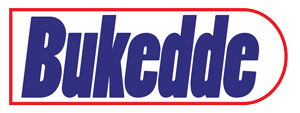From cows to cash: Why Uganda’s livestock sector should now break free
Uganda has more than 14 million cattle, 16 million goats, and about 4 million sheep. These figures sound impressive, but they tell only part of the story. Most of this livestock is kept under traditional systems, with limited commercialisation.
From cows to cash: Why Uganda’s livestock sector should now break free
By Admin .
Journalists @New Vision
__________________
OPINION
By Jamilu Muzinga
As Uganda celebrates 63 years of independence, one question still grazes in our national pasture: has our livestock sector truly gained its independence? For a country blessed with vast rangelands, fertile soils, and rich animal heritage, it is puzzling that the wealth in our kraals rarely translates into wealth in our pockets.
From the long-horned Ankole of the western hills to the zebu cattle of Karamoja, livestock has long been more than food — it is identity, status, and security. Yet, for millions of Ugandans who depend on livestock for their livelihoods, independence has remained largely symbolic. The sector continues to struggle under the weight of low productivity, persistent disease outbreaks, and poor access to markets and veterinary services.
Uganda has more than 14 million cattle, 16 million goats, and about 4 million sheep. These figures sound impressive, but they tell only part of the story. Most of this livestock is kept under traditional systems, with limited commercialisation. Productivity per animal remains low — milk yields are modest, calving intervals are long, and disease-related losses are frequent. The result is that while Uganda’s livestock numbers grow, the sector’s true economic impact remains stunted.
Consider the issue of livestock diseases, a recurring nightmare for farmers. Foot-and-mouth disease, lumpy skin disease, and contagious bovine pleuropneumonia continue to sweep through districts, often forcing quarantines that cripple local economies. In some regions, entire households have been pushed to the edge by animal losses that could have been prevented with timely vaccination and veterinary support. The absence of an efficient animal health surveillance and response system has left farmers feeling abandoned, grazing in uncertainty.
Then there’s the question of value addition. Uganda produces an estimated 2.8 billion litres of milk annually, yet less than half reaches processing plants. The rest is sold raw, often at giveaway prices, due to poor storage, transport challenges, and weak market organisation. The beef industry faces similar bottlenecks — informal slaughter, poor meat hygiene, and limited cold chain facilities. Meanwhile, Uganda’s leather and hides sector — a potential multi-billion-shilling export industry — remains grossly underdeveloped, with most hides exported unprocessed or wasted altogether.
It’s a national irony: Uganda owns the cows, but others earn the cash. Kenyan and Tanzanian processors continue to tap into Uganda’s livestock resources, value-add them, and sell them back to us at premium prices. The economic independence our farmers dreamt of remains postponed.
Yet, amid these challenges, hope grazes on the horizon. The government’s Agro-Industrialisation Strategy, Parish Development Model, and Livestock Master Plan all point toward a more structured and commercial livestock sector. If implemented with honesty and consistency, these programs can turn livestock into a genuine engine of growth. But policy papers alone are not enough. What farmers need is action — better extension services, functional markets, reliable veterinary drugs, and infrastructure that connects kraals to processors.
Uganda must reimagine its livestock sector as a full value chain, not a subsistence tradition. The herdsman in Mbarara should not only produce cattle but also benefit from feed production, milk collection, meat processing, leather manufacturing, and export opportunities. That is how true independence — economic independence — will finally be achieved.
Sixty-three years after the flag first rose over Kampala, Uganda’s freedom story remains unfinished. It will only be complete when the livestock sector, long confined to the margins, becomes a cornerstone of prosperity. Let this Independence Day remind us that our animals are not just symbols of wealth — they are the foundation of it. And it’s time we made them count.
The writer holds a Master of Science in Animal Science
